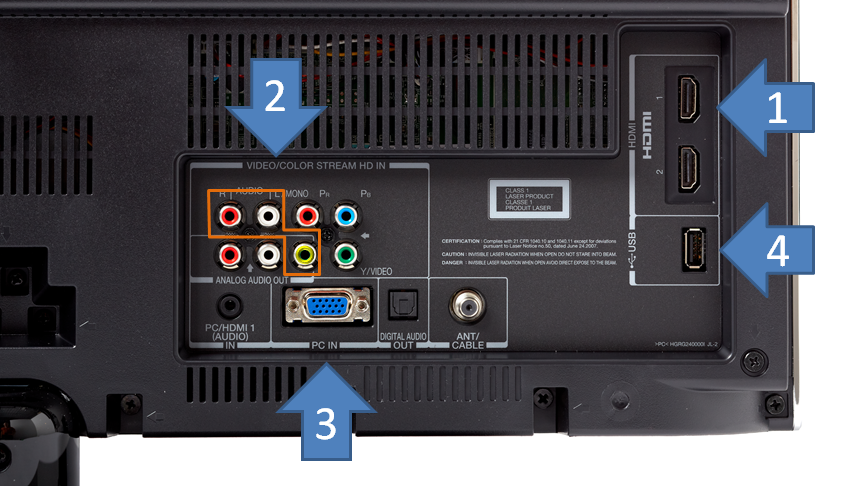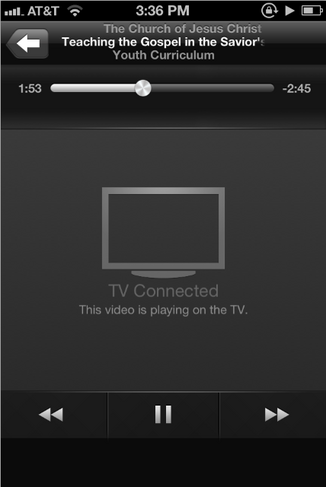Content found in this wiki may not reflect official Church information. See Terms of Use for more information.
Displaying Mobile Devices
> Meetinghouse Technology > Other Products
Determine Available Connections
For classes larger than five people, we recommend connecting mobile devices to a display. To do so, determine which of the following connection ports are available on existing meetinghouse equipment.
- 1. HDMI PORT
- 2. COMPOSITE PORTS (RED, WHITE, YELLOW OR GREEN)
- 3. VGA PORT
- 4. USB VIDEO PLAYBACK PORT
- 5. PLAYING THE VIDEO
HDMI Cable Option
First determine whether the display has an HDMI port (this is common for flat-screen LCD TVs). The HDMI port is the easiest way to play media from a device because it connects audio and video in one cable.
- Android devices often have built-in mini-HDMI ports. If that’s the case with your device, you need an HDMI mini adapter to connect it to the display. Note: not all Android devices support this option.
- Apple devices require an adapter since they don’t have built-in mini-HDMI ports. The adapter for the iPhone plugs into the main charging/synchronizing port. Plug a regular HDMI cable into the adapter.
- Newer laptops typically offer one of the following digital ports: HDMI, full-sized DisplayPort, mini-DisplayPort, or Thunderbolt. All of these digital connections carry both audio and video. It should be fairly simple to find and purchase cables with one of these adapters. This will then allow the laptop to connect to the display. In the case of Apple laptops, a separate dongle must be purchased.
Composite Adapter Option
CRT (Cathode-Ray-Tube) TVs do not have HDMI ports. For these TVs, a composite adapter will be needed—one that connects to the red, yellow, and white ports on a CRT TV.
- Adapters for composite ports are available for iOS devices and some Android devices. (Search online for an adapter.)
VGA Adapter Option
Connect a VGA cable from the laptop’s VGA port to the display’s VGA port.
- A 3.5 mm audio cable will also be needed to run audio through the display. This usually connects into the 3.5 mm audio input jack on the back of the display.
TVs with USB Ports That Support Video Playback
If the TV has a USB port that supports video playback, simply download videos to a USB drive, and insert the USB drive directly into the TV.
- Be aware that few USB ports on meetinghouse TVs have video playback. Most USB ports simply support showing a slideshow of pictures.
- TVs with USB video playback are the standard for new meetinghouses.
Playing the Video
Once the device is connected to the display, locate the input button on the remote or display, and press it to select the type of input being used (for example, HDMI, VGA/Computer, or INPUT #’s).
Once the TV input connects with the device, the monitor will show the video playing from the device. Most Android devices mirror (duplicate) the video display directly. With Apple devices, you will see a “TV Connected” screen on the device.
If you don’t see this “TV Connected” screen, the TV monitor’s input hasn’t connected with your device. Unplug your adapter, wait a few seconds, and plug it back in. Make sure the cables are snug. If you’re still having problems, double-check the TV to ensure you selected the right input.
If the video pauses for an extended period of time, the video mode on the device may expire. Simply unplug the adapter and then plug it back in to reinitiate the video mode.

